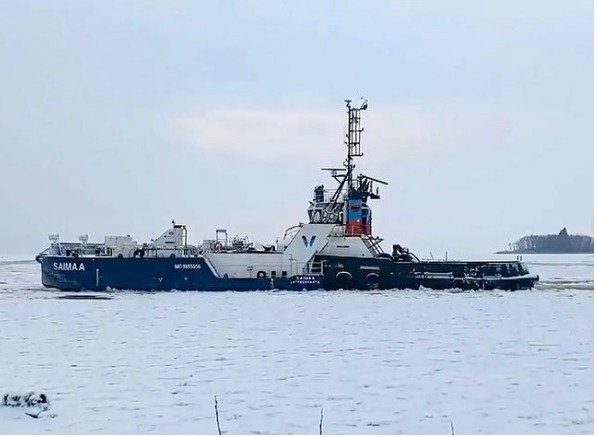The remaining ice will be broken by tug boat Calypso
 Navigation on the Saimaa Canal opens on 22 March 2021, the Federal Marine and River Transport Agency (Rosmorrechflot) says on its Instagram page.
Navigation on the Saimaa Canal opens on 22 March 2021, the Federal Marine and River Transport Agency (Rosmorrechflot) says on its Instagram page.
The detachable bow Saimaa, owned by the Finnish Transport Infrastructure Agency, operating together with the tug boat Calypso will break the remaining ice.
The first ship expected to pass the Saimaa Canal this season is Pinta (the flag of Gibraltar) sailing from the Latvian port of Klaipeda to the Finnish port of Imatra.
Over the six weeks of the internavigation period, the Finnish specialists conducted scheduled repairs at both Russian and Finnish parts of the Saimaa Canal.
The Saimaa Canal navigation season ended on 8 February 2021. As it was reported earlier, the volume of cargo carried by the Saimaa Canal in January-December 2020 grew by 11.5%, year-on-year, to 1.17 million tonnes. In the navigation season of 2020, the canal was used by 1,019 cargo ships, 10% more, year-on-year. The number of ships flying the flag of the Russian Federation makes 59% of the total number (596). It grew by 21.4%, year-on-year.
Due to coronavirus restrictions, there was no recreational or passenger vessel traffic in the canal during 2020.
Modernization of the Saimaa Canal is to be held between April 2022 and October 2024. During the construction works, the traffic of ships will be suspended from May 2022 till May 2023 and from October 2023 and May 2024.
The Saimaa Canal connects Lake Saimaa to the Gulf of Finland. Nearly half of the Saimaa Canal runs through a land area leased from Russia. The eight locks of the Saimaa Canal are operated via remote control centres at Mälkiä and Brusnitchnoe.
The Saimaa Canal built in 1856 and renovated in 1963-1968 is 57.3 kilometers long including the sea fairway. 23.3 kilometers of it is within the territory of Finland with 34 km in the territory of Russia (including 14.4 kilometers of the approach channel in the Vyborg Bay). Finland rents 19.6 km of the Russian part of the canal. The most recent agreement entered into force in 2012 and expires in 2063.



